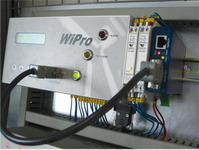
Only the selling of “Mandatory Renewable Energy Target (MRET)“ certificates with which the Australian Government encourages the use of renewable energy sources has made wind power an interesting and viable option for these companies.
Although the current version of the MRET scheme may not go far enough in encouraging the use of wind power, individual states have already adopted extended schemes designed to encourage renewable energy generation.
FAG Industrial Services (F’IS) is the maintenance and condition monitoring company within the Schaeffler Group. In early 2006, a total of 49 ‘FAG WiPro’ (Wind Turbine Protection) systems were installed for a customer in two major projects in Australia.
Codrington Wind Farm is located on the South coast of the state of Victoria and was originally constructed in June 2001. The wind farm comprises 14 turbines, each with a capacity of 1.3MW. Challicum Hills Wind farm has 35 turbines with a capacity of 1.5MW each and was originally commissioned in 2003. The turbines are located on a range of hills near the city of Ararat in Western Victoria.
The condition monitoring systems installed there are serviced by Condition Monitoring Services Australia (CMSA) – a subsidiary of F’IS – which employs around 25 staff and has offices in all regions of Australia and New Zealand. As all F’IS monitoring centres are in permanent contact with each other, there is a constant exchange of condition monitoring information and experience. However, choosing the most suitable communication channel is often a genuine challenge – and not only where large-scale projects are concerned. This includes not only the transmission of data within the wind farm but also transmission to a service station, which is indispensable for remote monitoring.
The majority of wind farms have a telephone line to the outside world, but it is used primarily to monitor electricity production data. This telephone line also determines the maximum possible transmission rate for the farm, so installing high speed networks would not be much of an advantage in the network within the wind farm.
When selecting the most suitable communication channels within the site, a number of factors must be taken into account, including the size of the wind farm, the distances between the individual turbines, existing optical wave guides or copper lines – possibly in the form of a network – as well as the cost of data transmission. For wireless transmission (for example via WLAN), the geographical conditions must also be taken into account.
At both Codrington and Challicum Hills wind farms, no lines between the turbines could be used, so only the wireless transmission option remained. In Challicum, the site uses GSM technology (fully digital wireless network), as the customer was able to reduce the cost of GSM transmission drastically, thanks to a special agreement with its telephone company.
In contrast, at Codrington Wind Farm, the GSM network coverage was not sufficient for reliable monitoring, so the site uses CDMA modems instead. The advantages offered by the CDMA technology (multiplex system) include the possibility to establish networks and then access these networks via the Internet. This offers significant advantages over a standard GSM version when it comes to data security and cost.
After the most suitable communication channels had been selected and the systems installed, the measuring tasks for the FAG WiPro condition monitoring systems were then defined.
The favourably priced FAG WiPro system, which is available with up to 8 sensor channels and the ability to perform 16 measuring tasks with 12 frequency windows each, is a powerful vibration monitoring system for permanent, frequency-selective monitoring. Monitoring the condition of large wind turbines (3 to 5MW) of the type erected preferably in offshore regions, the size of the components may make it necessary to use additional sensor technology and to perform additional measuring tasks. As the monitoring activities in offshore turbines may extend to include additional machine components, users should consider the recently-developed FAG ProCheck online condition monitoring system.
Jointly developed with National Instruments, this innovative online condition monitoring system can accommodate up to 16 sensor channels plus additional analogue and digital inputs and outputs, and so can be expanded from monitoring an individual machine, right up to monitoring complete production plant systems or wind farms. Multiple FAG ProCheck units can be connected to a network and managed using the same database.
To summarise, such large-scale wind turbine projects on a global level can only be realised with an efficient team of specialists on site. Both the installation of a major project and service in close contact with customers cannot be ensured without the presence of condition monitoring specialists in that particular country.
Although logistics in the wind turbine sector are typically very complex and costly, being able to plan maintenance activities efficiently is so important in view of the topographical conditions prevailing in Australia.
F’IS online condition monitoring systems such as FAG WiPro and FAG ProCheck ensure the user receives a lengthy advance warning period. In this way, technicians, material (delivery periods) and sometimes even a heavy-duty crane, can be dispatched in plenty of time so that any unexpected shutdowns can be prevented.
For more information on F’IS products and services, please visit www.fis-services.com or telephone the marketing department on 0121 351 3833.

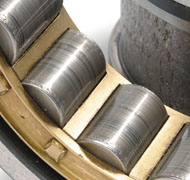 Condition monitoring of machinery lubricants is an established method of predicting and avoiding impending machinery breakdown. With Kittiwakes
Condition monitoring of machinery lubricants is an established method of predicting and avoiding impending machinery breakdown. With Kittiwakes SPM Instrument, Sweden, leading worldwide provider of condition monitoring technology and products, today announced the launch of its new high-performance online system for condition monitoring of critical industrial equipment.
SPM Instrument, Sweden, leading worldwide provider of condition monitoring technology and products, today announced the launch of its new high-performance online system for condition monitoring of critical industrial equipment.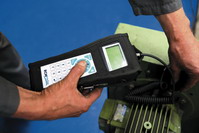 While condition monitoring systems have obvious advantages to the manufacturing sector, other industries are now also benefiting from their use.Preventing maintenance problems using condition monitoring systems has obvious advantages to manufacturing plants. However, other sectors, such as the marine industry, are now starting to see the benefits of implementing similar vibration-based detection systems onboard ships.
While condition monitoring systems have obvious advantages to the manufacturing sector, other industries are now also benefiting from their use.Preventing maintenance problems using condition monitoring systems has obvious advantages to manufacturing plants. However, other sectors, such as the marine industry, are now starting to see the benefits of implementing similar vibration-based detection systems onboard ships.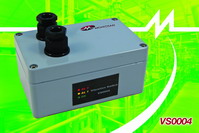 Monitran, a world leader in the development and manufacture of sensors for the measurement of vibration and displacement, has launched the VS0004, a complete condition monitoring and alarm module.
Monitran, a world leader in the development and manufacture of sensors for the measurement of vibration and displacement, has launched the VS0004, a complete condition monitoring and alarm module.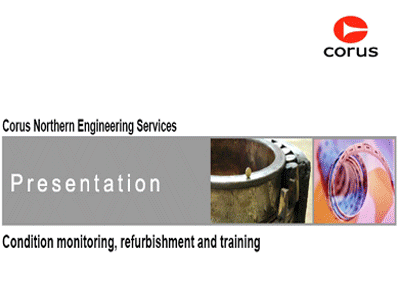
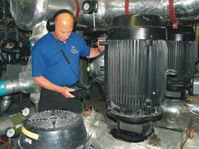 When we purchase a machine we accept that it will not last forever. The problem isn
When we purchase a machine we accept that it will not last forever. The problem isn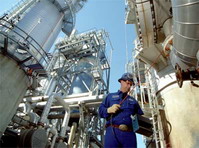 Over the past 17 years, Management of Change (MOC) has received increased attention at chemical plants and refineries due to the promulgation of new OSHA regulations. Officially designated 29CFR 1910.119 Process Safety Management of Highly Hazardous Chemicals, the OSHA PSM regulations state that any time a critical component in an oil or chemical plant changes, a formal MOC program is required to ensure that the proposed change is made safely.
Over the past 17 years, Management of Change (MOC) has received increased attention at chemical plants and refineries due to the promulgation of new OSHA regulations. Officially designated 29CFR 1910.119 Process Safety Management of Highly Hazardous Chemicals, the OSHA PSM regulations state that any time a critical component in an oil or chemical plant changes, a formal MOC program is required to ensure that the proposed change is made safely.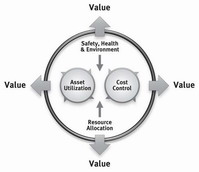 "What is actually the added value of maintenance?" is a frequently heard question in boardrooms the world over. Even though maintenance is often critically important, few maintenance managers are able to answer the question convincingly. Especially when they are asked to express the benefits in terms of economic value added or shareholder value - the language increasingly being spoken in European boardrooms .
"What is actually the added value of maintenance?" is a frequently heard question in boardrooms the world over. Even though maintenance is often critically important, few maintenance managers are able to answer the question convincingly. Especially when they are asked to express the benefits in terms of economic value added or shareholder value - the language increasingly being spoken in European boardrooms .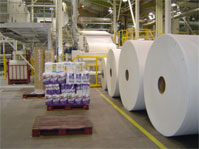 SPM Instrument India has been awarded a contract for the first comprehensive installation of online condition monitoring equipment ever in an Indian paper mill. Emami Paper Mills Ltd in Balasore, India has selected SPM Instrument to provide equipment for continuous shock pulse and vibration severity measurements on critical parts of its latest paper machine.
SPM Instrument India has been awarded a contract for the first comprehensive installation of online condition monitoring equipment ever in an Indian paper mill. Emami Paper Mills Ltd in Balasore, India has selected SPM Instrument to provide equipment for continuous shock pulse and vibration severity measurements on critical parts of its latest paper machine.